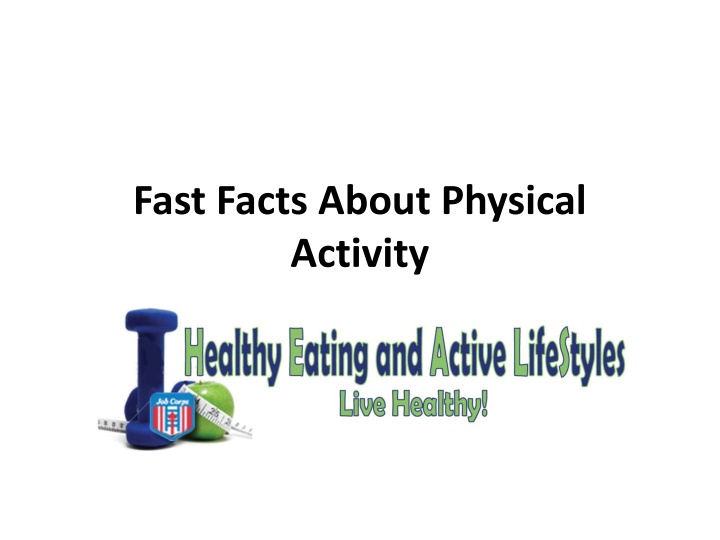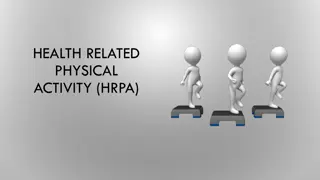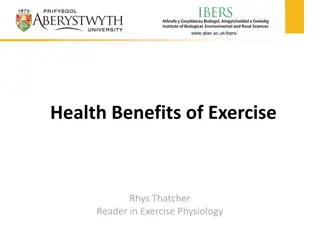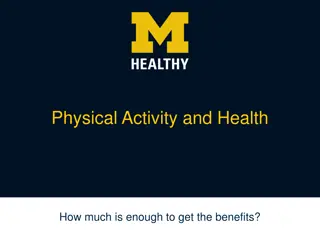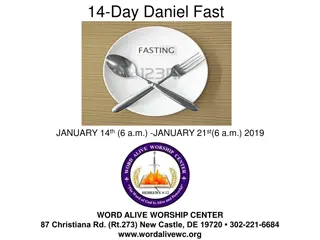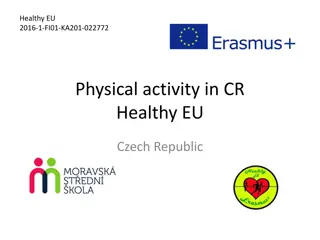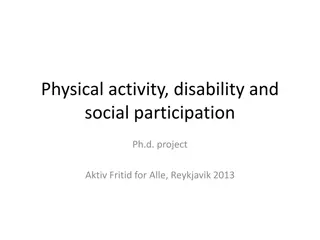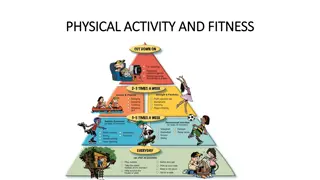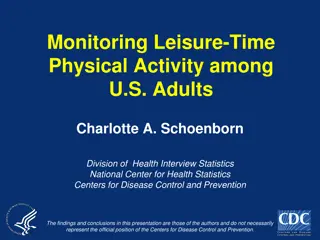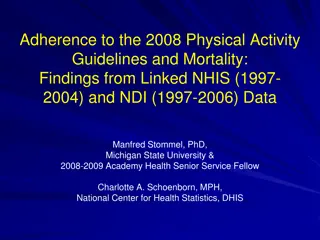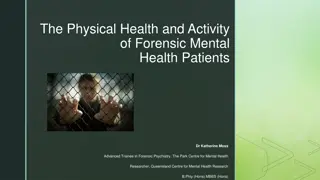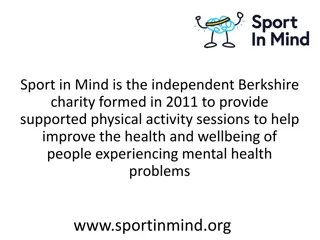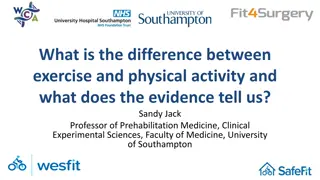Fast Facts About Physical Activity
Physical activity and exercise play vital roles in maintaining overall health. Engaging in daily movement and planned physical activities like walking, running, and weight lifting offer numerous benefits such as weight control, improved heart health, and reduced disease risk. Guidelines on the recommended amount and types of exercise, including aerobic, muscle strengthening, and flexibility exercises, are provided to help individuals lead healthier lifestyles. The FITT principle emphasizes gradually increasing exercise frequency, intensity, time, and variety to get in better shape. Start your journey to a healthier you today!
Download Presentation

Please find below an Image/Link to download the presentation.
The content on the website is provided AS IS for your information and personal use only. It may not be sold, licensed, or shared on other websites without obtaining consent from the author.If you encounter any issues during the download, it is possible that the publisher has removed the file from their server.
You are allowed to download the files provided on this website for personal or commercial use, subject to the condition that they are used lawfully. All files are the property of their respective owners.
The content on the website is provided AS IS for your information and personal use only. It may not be sold, licensed, or shared on other websites without obtaining consent from the author.
E N D
Presentation Transcript
Fast Facts About Physical Activity
Definitions Physical Activity: daily activities that require movement Exercise: planned physical activity; used to improve fitness or healthy
Benefits of Physical Activity Weight control Heart health Lowers risk of diseases Makes you stronger Makes you happier, less depressed, and less stressed Sources: American Psychological Association Help Center. (2009). Exercise fuels the brain s stress buffers. Retrieved November 4, 2009 from the American Psychological Association Web site: http://www.apahelpcenter.org/articles/article.php?id=25 Centers for Disease Control. (2009, Jan 27). Physical activity for a healthy weight. Retrieved November 4, 2009 from the Centers for Disease Control Web site: http://www.cdc.gov/healthyweight/physical_activity/index.html
How Much Exercise? 150 minutes of moderate exercise per week (about 30 min per day/5 days a week). Moderate activity makes you breath hard, but you can still talk like walking or playing with kids; or, 75 minutes per week (25 minutes per day/3 days a week) of vigorous activity. This should make you breath hard. Vigorous activities include running, playing sports, and aerobic dance. Source: Centers for Disease Control. (2009, Jan 27). Physical activity for a healthy weight. Retrieved November 4, 2009 from the Centers for Disease Control Web site: http://www.cdc.gov/healthyweight/physical_activity/index.html
What Kind of Exercise? Aerobic: Walking, running, playing sports Muscle strengthening: Lifting weights, doing push ups and sit ups, squats, lunges, Pilates Some impact for strong bones: Running, jumping, playing basketball Flexibility: Stretching, yoga Source: U.S. Department of Health and Human Services. (2008, Oct 16). Physical activity guidelines for Americans. Retrieved November 4, 2009 from the U.S. Department of Health and Human Services Web site at http://www.health.gov/paguidelines/guidelines/chapter3.aspx.
Getting In Shape Take it slow if you re just starting. FITT principle Increase FREQUENCY = exercise more often Increase INTENSITY = gradually take on more challenging activities Increase TIME = As you get in better shape, try to workout longer Change the TYPE = vary the types of exercise you do so your body doesn t get used to it
